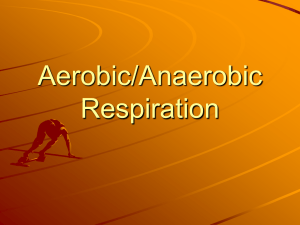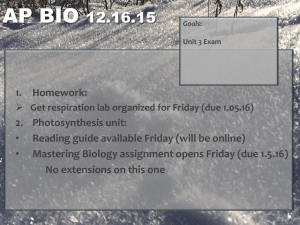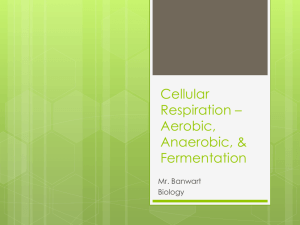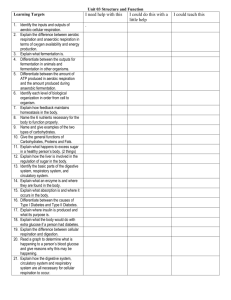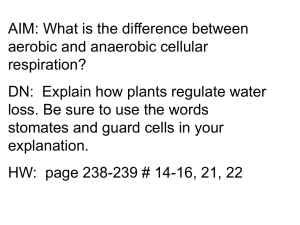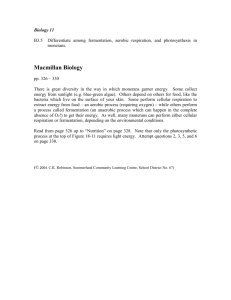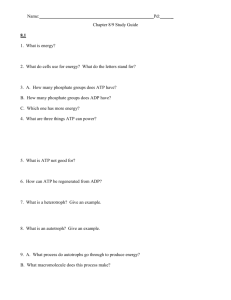Respiration - Hicksville Public Schools / Homepage
advertisement
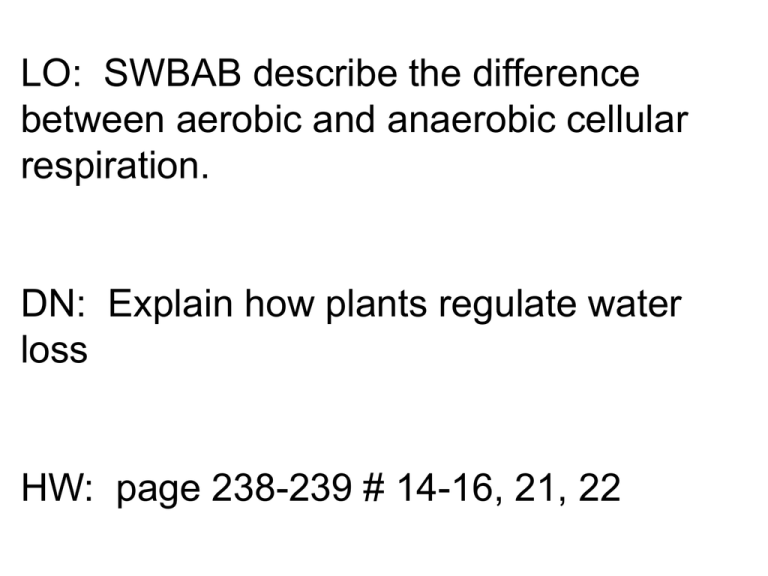
LO: SWBAB describe the difference between aerobic and anaerobic cellular respiration. DN: Explain how plants regulate water loss HW: page 238-239 # 14-16, 21, 22 Cellular Respiration C6H12O6 + O2 CO2 + H2O + ATP Releases CO2 by breaking down glucose molecules in the presence of O2 Energy in food molecules is used to produce ATP- energy the body can use It is an enzyme controlled reaction Where does cellular Respiration occur? MITOCHONDRIA Two types of cellular respiration Aerobic and anaerobic Oxygen No oxygen Aerobic Respiration • Used O2 and glucose Raw materials= O2 and C6H12O6 End products= CO2, H2O and ATP How do these material get into and out of cells? O2: breathe in, diffused into blood and carried to cells C6H123O6: food we consume, diffused into blood and carried to cells What is the chemical equation for aerobic respiration? Do plants carry out aerobic respiration? YES!!!! Why do ALL living things carry out cellular respiration? To carry out life processes: metabolism Anaerobic Cellular Respiration • Organisms make ATP (energy) without oxygen • This process is also called anaerobic • There are two types of anaerobic respiration – Alcoholic fermentation – Lactic Acid Fermentation Alcoholic Fermentation • Glucose= 2ATP + 2CO2 + alcohol • Yeast and bacteria Why does bread have so many holes? The gas that is released during fermentation creates bubbles and pockets that make bread rise Lactic Acid Fermentation • Glucose = 2 ATP + lactic acid • Bacteria and animal muscle cells when they run out of O2 Alcoholic vs Lactic Acid Fermentation 1. What is the organic compound used by both? 2. What is their main product? 3. How are they different? 1. Alcoholic fermentation produces 2. Lactic Acid fermentation produces 4. What organisms utilize alcoholic fermentation? 5. What organisms utilize lactic acid fermentation? How are these things made? Bacteria Yeast
